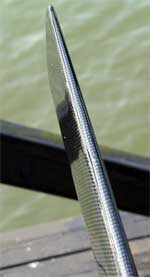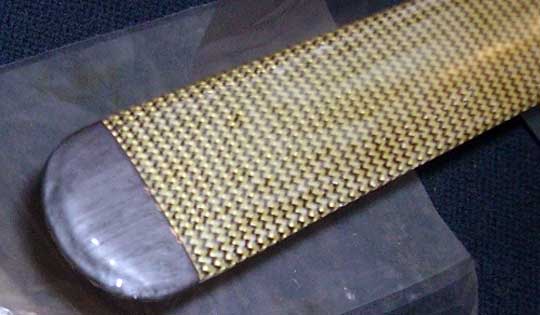Carbon greenland paddle
Monday, April 14, 2008, 14 comments
A couple of years ago Duane Strosaker published a carbon fiber paddle project, an article that was highly appreciated, but with noone, as it seems, taking up on the idea - up til now, that is. Rune Eurenius in Gothenburg built a beautiful paddle using roughly the same method.

 Duane notes this as well on the qajaqusa forum: "Speaking of my hollow CF GP building instructions, Rune in Sweden built one. In the three years since I first provided the instructions, he is the first one (besides me) to actually build one".)
Duane notes this as well on the qajaqusa forum: "Speaking of my hollow CF GP building instructions, Rune in Sweden built one. In the three years since I first provided the instructions, he is the first one (besides me) to actually build one".)
Rune presents the project in pictures here. specs:: Length 223 cm. Width of blades 90 mm. Shaft 38x31 mm. Weight 730 gram. Cost of materials approx SEK 800 (half of it carbon). Building time approx 30 h.
"Hi Björn,
After building Duanes hollow paddle, I can establish that it is not very stiff - not more than my old wooden paddle (which I like). The torsional stiffness is high though and the low weight is handy. The flotation from 2 liters air tempts me to leave the paddle float at home.
At occasions I have tried the Superior carbon paddles and found them much stiffer. Maybe the foam core makes the difference?
The water temp in Gothenburg did not invite to spent time upside down. I prefer to, somewhat impatiently, wait for more tolerable temps.
Rune Eurénius
Gbg"
Another approach...
The other day there were pics from another exciting paddle project. Joel Fleischer had to reforge a broken paddle and developed a method where a braided carbon/kevlar tubing was tightened over the old paddle and laminated in place. This is how it turned out:

Here is Joels desciption with pics and a discussion on the potential on qajaqusa.

